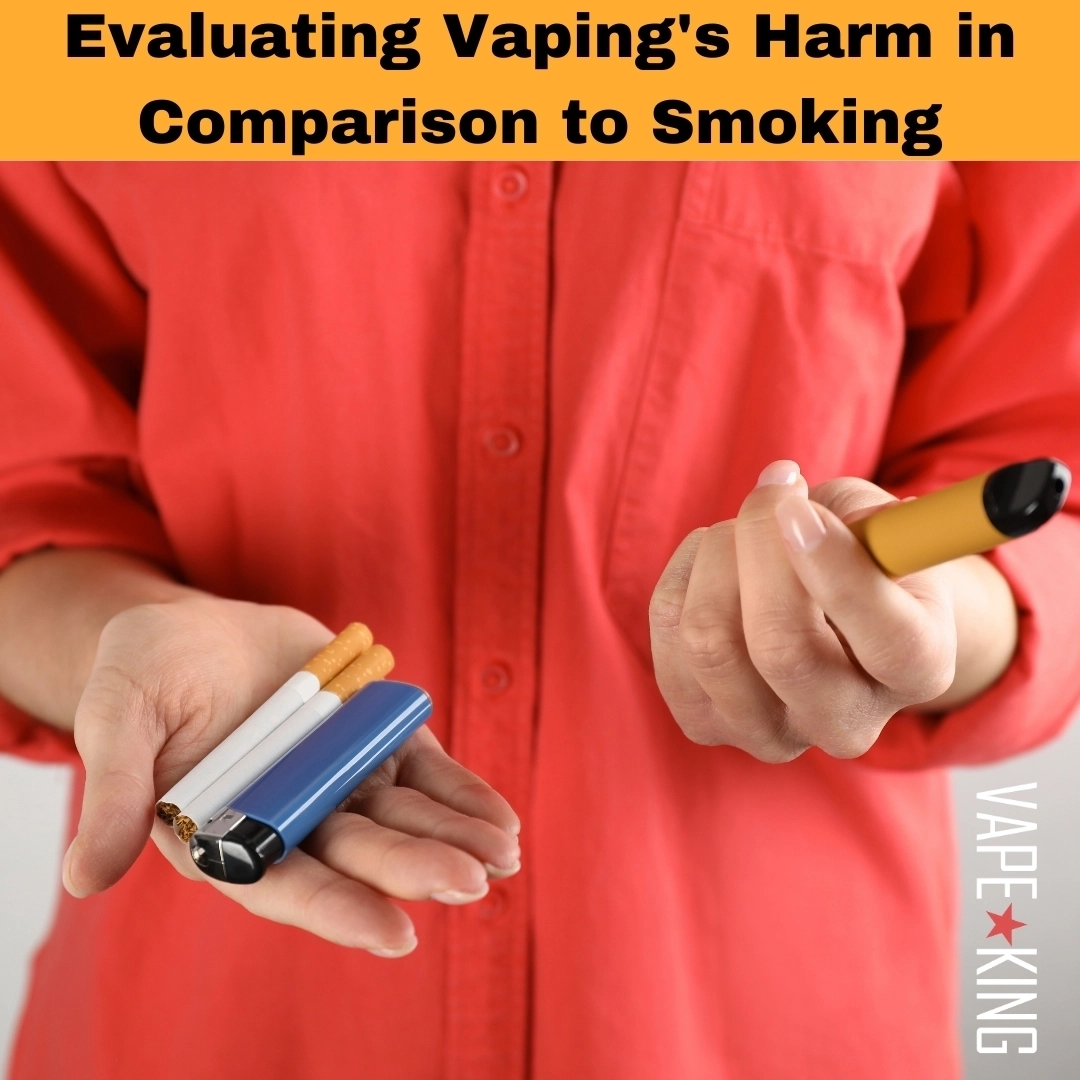Evaluating Vaping's Harm in Comparison to Smoking

The roots of vaping can be traced back to ancient times, with evidence of early vaping practices found in Egypt around the 5th century BC. However, the modern concept of vaping that we know today emerged much later.
The idea of an electronic cigarette was first proposed by Joseph Robinson in 1927 when he patented a device known as the 'Mechanical Butane Ignition'. However, it wasn't until the mid-20th century that the first device closely resembling a modern e-cigarette was developed. Herbert A. Gilbert patented his "smokeless non-tobacco cigarette" in 1963, marking a significant milestone in vaping history.
Despite this early innovation, e-cigarettes did not gain much traction at the time. Fast forward to 2003, and Hon Lik, a Chinese pharmacist, invented the first commercially successful e-cigarette. Lik's personal motivation stemmed from his father's tragic death due to lung cancer, and his own desire for a safer alternative to smoking.
E-cigarettes entered the U.S. market in 2006 and have since evolved from simple nicotine delivery devices into customizable gadgets capable of delivering various substances. Vaping has surged in popularity over the past decade, partly due to perceptions of it being a healthier alternative to traditional cigarettes. However, ongoing research and debate surround the health effects of vaping.
Let's address a common misconception: the belief that e-cigarettes or vaping are just as harmful as smoking traditional cigarettes. This is not an accurate representation of the facts. Annually, approximately 480,000 deaths are attributed to cigarette smoking, which is known to cause a range of health issues such as cancer, heart disease, lung disease, stroke, and diabetes, among others.
If you're skeptical about the relative harm of vaping versus smoking traditional cigarettes, let's examine the health risks associated with both. By comparing them, we can better understand the significant difference in the level of established health risks between these two practices.
According to Dr. Michael Blaha, director of clinical research at the Johns Hopkins Ciccarone Center for the Prevention of Heart Disease, vaping is less harmful than smoking traditional cigarettes, but it's still not entirely safe. E-cigarettes heat nicotine, flavorings, and other chemicals to create an aerosol that you inhale. Regular tobacco cigarettes contain 7,000 chemicals, many of which are toxic. While we don't know exactly what chemicals are in e-cigarettes, there's almost no doubt that vaping exposes you to fewer toxic chemicals than smoking traditional cigarettes.
However, an outbreak of lung injuries and deaths associated with vaping occurred. In February 2020, the Centers for Disease Control and Prevention (CDC) confirmed thousands of cases of e-cigarette or vaping use-associated lung injury (EVALI) and numerous deaths. These incidents predominantly affected individuals who modified their vaping devices or used black market e-liquids, particularly those containing THC.
Now, let's delve into the similarities and differences between smoking and vaping in terms of their chemical composition, usage methods, and health effects.
In terms of usage methods, both involve inhalation, but smoking involves burning tobacco, while vaping uses a device to heat the e-liquid into a vapor. This fundamental difference - combustion versus heating - leads to different health risks.
Smoking tobacco is well-documented as a leading cause of many serious health conditions, including lung cancer, heart disease, stroke, and chronic obstructive pulmonary disease (COPD). It's also the leading cause of preventable death worldwide.
Vaping, on the other hand, is a newer phenomenon, and its long-term health effects are not yet fully understood. However, research suggests it is likely less harmful than smoking. A report by Public Health England stated that e-cigarettes are estimated to be 95% less harmful than smoking.
IS VAPING COMPLETELY HARMLESS?
Vaping is not without risks. E-cigarettes have been associated with lung injuries, and recent studies suggest potential cardiovascular and respiratory effects. Additionally, the high nicotine content in many e-cigarettes can lead to addiction, especially among young people.
DO E-CIGARETTES CONTAIN THE SAME HARMFUL CHEMICALS AS TRADITIONAL CIGARETTES?
E-cigarettes, also known as electronic cigarettes or vapes, work by heating a liquid into an aerosol that users inhale. Typically, this liquid contains nicotine, flavorings, and other chemicals. Here's a closer look at these components:
Nicotine: This addictive substance is found in tobacco. Most e-liquids contain nicotine, although the concentration can vary.
Propylene Glycol (PG) and Vegetable Glycerin (VG): These are the base substances used in e-liquid. While considered safe for ingestion by the FDA, their long-term effects when inhaled are not well understood.
Flavorings: E-cigarettes offer thousands of flavors, often considered food-grade and safe for consumption. However, their safety when heated and inhaled is uncertain.
Metals and contaminants: Some studies have detected trace amounts of metals and other contaminants in e-cigarette vapor, likely originating from the heating element or other device parts. These contaminants may include lead, cadmium, nickel, and tin.
Volatile Organic Compounds (VOCs): Certain e-cigarettes have been found to emit VOCs like formaldehyde, acrolein, and acetaldehyde, particularly at high power settings.
Particulate Matter: E-cigarette aerosols contain tiny particles that can reach deep into the lungs. The health implications of inhaling these particles are not fully understood.
While e-cigarettes generally contain fewer harmful chemicals than traditional cigarettes, they are not without risk. The long-term health effects of vaping are still under investigation, and product composition can vary significantly between brands and products. Therefore, it's crucial to understand what you're inhaling.
In conclusion, while vaping may present fewer risks than traditional smoking, it's not risk-free. More research is needed to comprehend its long-term health impacts fully. As a health expert, I advise non-smokers to avoid both habits, and smokers to seek professional medical advice when considering alternatives or methods to quit smoking. Informed decisions based on reliable sources and scientific evidence are essential for overall well-being.
No posts found
Write a review



